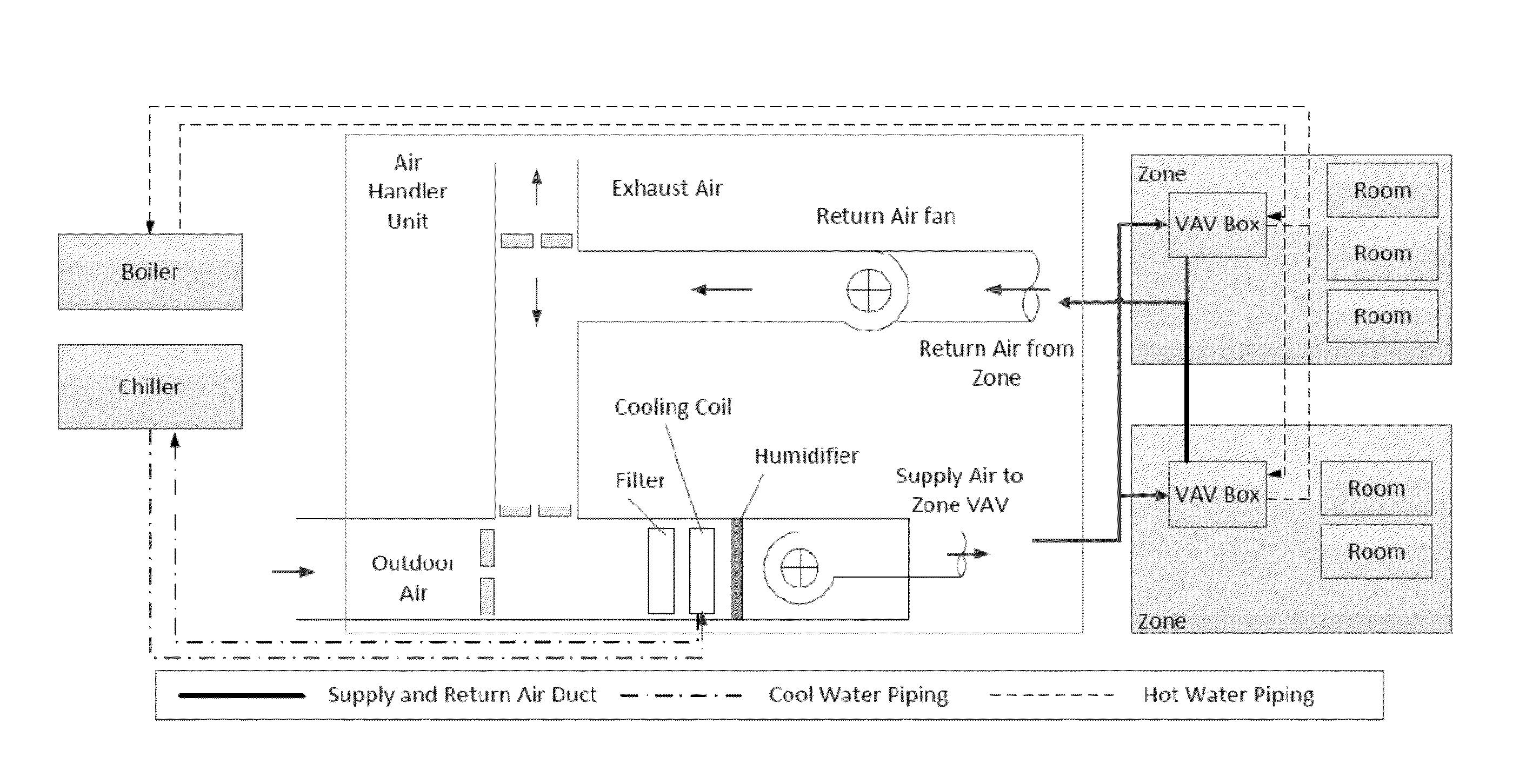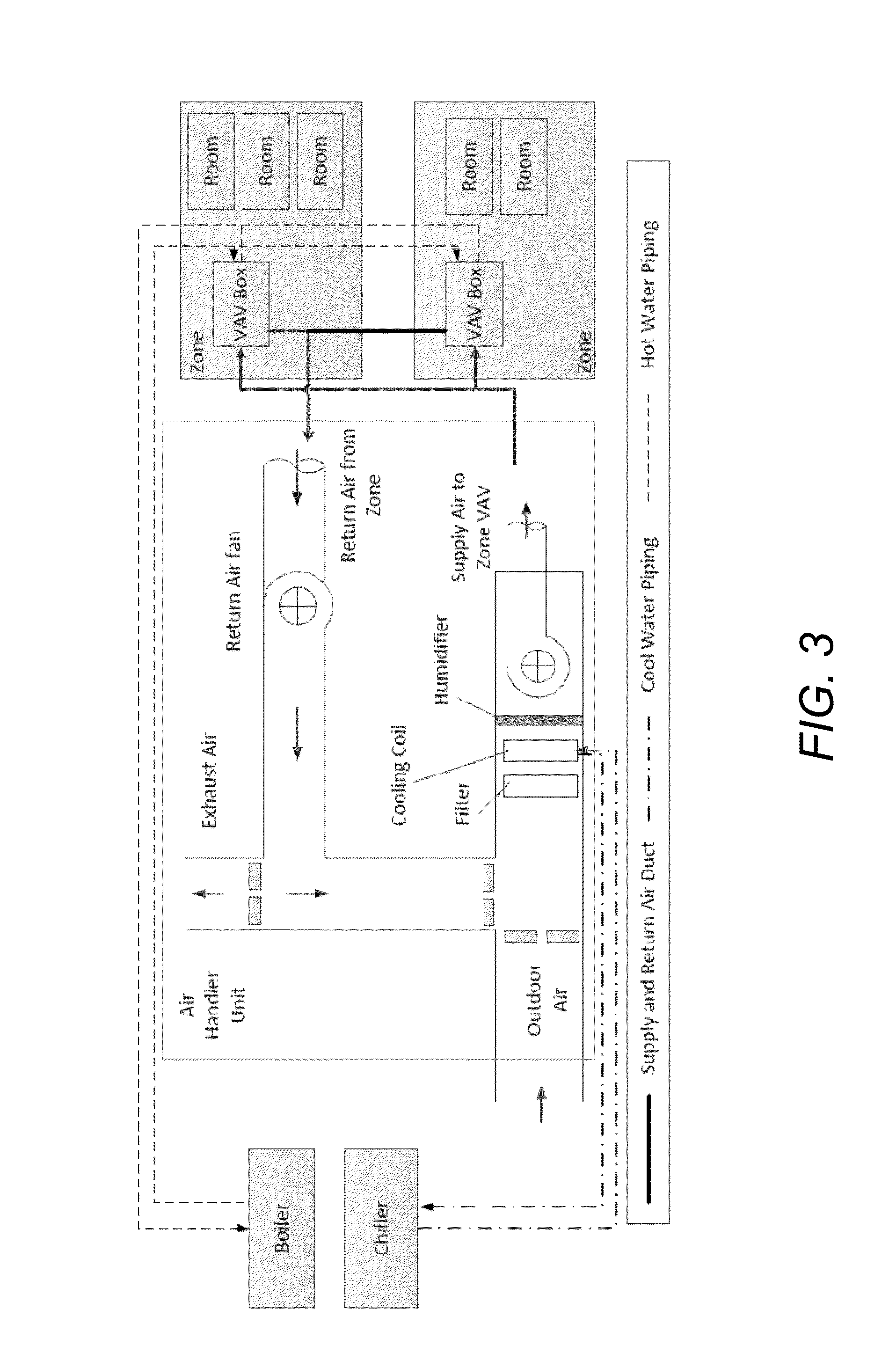Human-building interaction framework for personalized comfort driven system operations in buildings
- Summary
- Abstract
- Description
- Claims
- Application Information
AI Technical Summary
Benefits of technology
Problems solved by technology
Method used
Image
Examples
Embodiment Construction
[0046]Illustrative embodiments are now described. Other embodiments may be used in addition or instead. Details that may be apparent or unnecessary may be omitted to save space or for a more effective presentation. Some embodiments may be practiced with additional components or steps and / or without all of the components or steps that are described.
[0047]Implementations and evaluations of frameworks that integrate building occupants' personalized thermal profiles into HVAC control logic is now presented. The framework may enable occupants to communicate their preferences for indoor thermal conditions through a user interface, leveraging a participatory sensing approach. The framework may learn occupants' comfort profiles, using a fuzzy predictive model, and may control the HVAC system using a complementary control strategy. This may enable the framework to be implemented in existing, centrally controlled HVAC systems with minimum intrusion.
[0048]Evaluation of the framework for user c...
PUM
 Login to View More
Login to View More Abstract
Description
Claims
Application Information
 Login to View More
Login to View More - R&D
- Intellectual Property
- Life Sciences
- Materials
- Tech Scout
- Unparalleled Data Quality
- Higher Quality Content
- 60% Fewer Hallucinations
Browse by: Latest US Patents, China's latest patents, Technical Efficacy Thesaurus, Application Domain, Technology Topic, Popular Technical Reports.
© 2025 PatSnap. All rights reserved.Legal|Privacy policy|Modern Slavery Act Transparency Statement|Sitemap|About US| Contact US: help@patsnap.com



